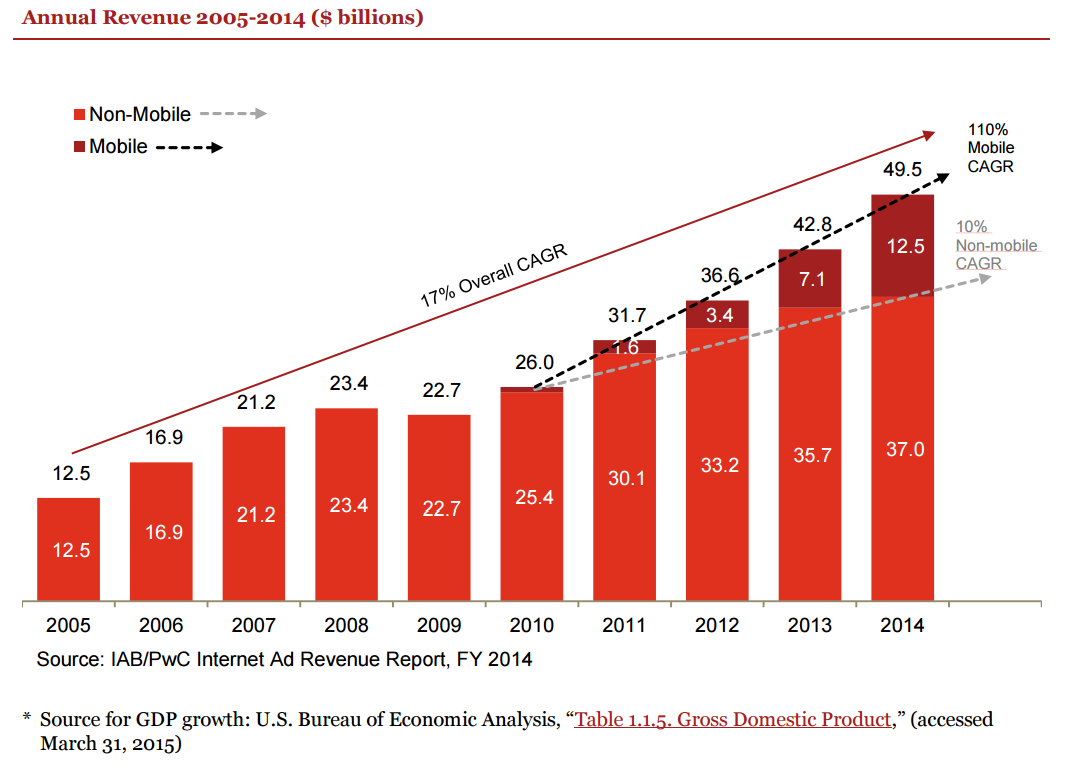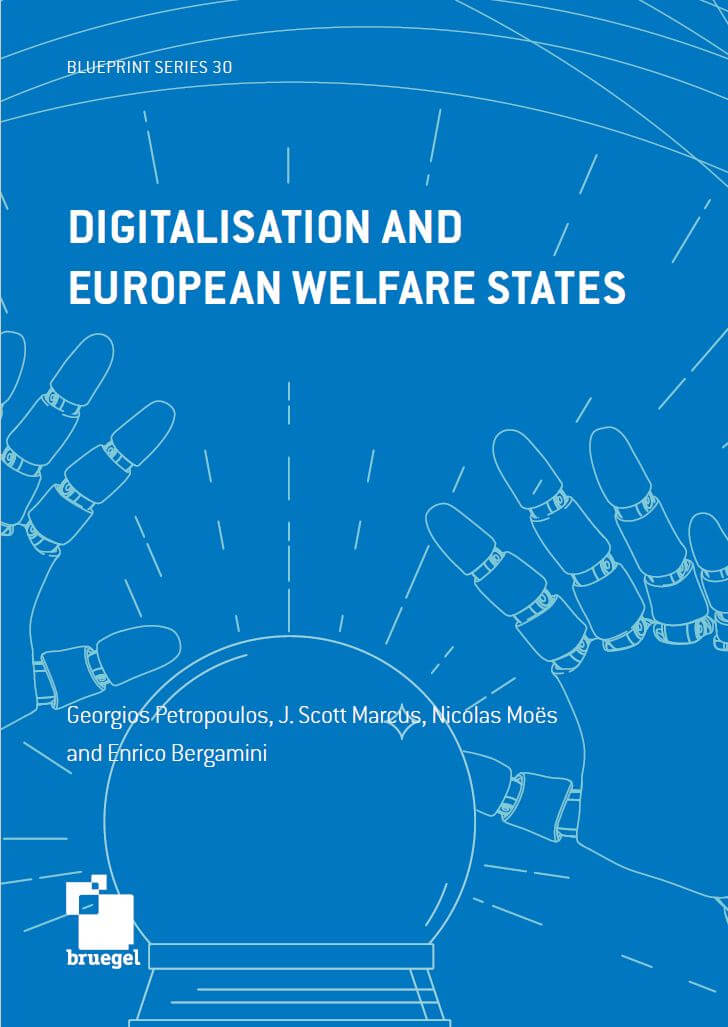Blog Post
The economic value of personal data for online platforms, firms and consumers
Data is often referred to as the ‘oil of the twenty-first century'. This article reviews how personal data generate economic value for the three major parties of the digital market: online platforms (such as search engines, social networking sites, online videos, content sites) and their clients, companies and consumers.
The European Union’s Data Protection Directive (95/46/EC) defines personal data as any information relating to an identified or identifiable natural person or data subject. Personal data can be viewed as an economic asset generated by the identities and behaviours of individuals which is traded in exchange for higher quality services and products. The amount of personal data stored is increasing rapidly. It is indicative that 90 percent of data in the world today has been created just in the last two years[1].
In a two-sided market mechanism, online platforms act as intermediaries that collect data from consumers and sell advertising slots to companies. By analysing the data they receive from consumers, they can design personalised advertising strategies for companies’ products and services. Companies are thus in theory more successful in placing their products, and consumers receive recommendations tailored to their interests. In other words, use of personal data removes information asymmetries and contributes to the efficiency of online transactions[2].
However, concerns about potential misuse of consumer data are not misplaced. Consumers are not always aware of how their data can be used by online platforms, or if it is adequately protected. Data analysis could potentially lead to discrimination, as pointed out by the New York Times[3]:
“You might be refused health insurance based on a Google search you did about a medical condition. You might be shown a credit card with a lower credit limit, not because of your credit history, but because of your race, sex or ZIP code or the types of Web sites you visit.”
Such lack of self-determination over personal data on the part of consumers might give rise to an uneven exchange of the economic value. If not properly addressed, such concerns about how data is used threaten to reduce individuals’ willingness to share their personal information[1]. While potential misuse of personal data and the associated privacy concerns are important topics that need to be addressed by the authorities, in this article we focus on the economic value of personal data generated by the underlying two-sided market mechanism.
Online platforms
Online platforms such as Google[2] and Facebook[3] use the personal data they acquire to enhance users’ experiences and provide more personally relevant services. For example, Facebook uses users’ data to communicate with users, fine-tune its services, provide more personalised content and advertising, make suggestions, and provide shortcuts for users, for example when tagging pictures.
In addition, online platforms allow businesses to market their products/services to selected audiences, and reduce the noise of irrelevant advertising for those audiences by enabling interest-based advertising that is based on users’ personal data and demographic characteristics. Facebook’s interest-based advertising model, for example, is developed based on users’ age, gender, location and interests. Google installs cookies in users’ browsers to record the types of pages that users’ visit and associates users with certain interest or demographics, as a basis for targeted advertising[4].
Given that such platforms do not charge consumers for their internet services, they base a high share of their revenues on advertising (which of course depends on the number of consumers they attract). In 2014, 2013, and 2012, advertising accounted for 92 percent, 89 percent and 84 percent, respectively of Facebook’s revenues[5].
Google’s advertising has always been a major revenue generator, contributing more than 90 percent of Google’s total revenue within the last decade (Figure 1).
In the United States, annual revenues from online advertising have increased in the last decade. The overall average annual growth rate of revenues from online advertising was 17 percent from 2005 to 2014, with total revenues in 2014 reaching $49.5 billion[1]. There has been a growing trend of mobile advertisement; the average annual growth rate of mobile advertising was 110 percent from 2010 to 2014; non-mobile advertising revenues, on the other hand, while making up 75 percent of total online advertising revenues in 2014, only grew by 10 percent on average from 2010 to 2014.

Online advertising has transformed the overall dynamics of advertising in the US, and online advertising revenues now exceed that of any other advertising channel in the US, including broadcast television and cable television, which stood at $40.5 billion and $25.2 billion respectively in 2014.
The value of personal data to online platforms is shown by advertising revenues per user (ARPU), which for Google in the first quarter of 2014 was as much as $45 on average. Google has consistently earned ARPU of more than $40 on average since the fourth quarter of 2012[1]. Facebook’s worldwide ARPU was $9.45 in 2014[2], 39 percent higher than in 2013.
Firms
Firms not only passively consume data from online platforms. They are also actively expanding their user databases and analysing qualitatively the trends on the demand side. This can lead them to increase their market shares by designing new products and services that better suit consumer preferences. It is difficult to quantify the added value of such processes for firms. But projections seem to indicate the increasing importance of personal data for private and public organisations. Applications built on personal data can provide quantifiable benefits of as much as €1 trillion annually by 2020, with a third of the total accruing to private and public organisations, and two thirds accruing to consumers. This means a benefit for firms of about €330 billion annually by 2020. These applications will provide 22 percent of the annual growth of revenues for public and private-sector organisations in an overall stagnant European economy[3].
Examples of the savings and innovations that can result from the use of personal data are:
There is a trend to use data such as product reviews, comments posted on social media sites and usage data from in-product sensors, to help companies better focus their research efforts and shorten development lifecycles[4].
To identify and prevent fraud in online payments, PayPal developed a system to screen payments and combine them with consumers’ personal data, such as IP addresses, browser information and other technical data. This results in improved user trust in commercial exchanges online[5] . It is also estimated that insurers, healthcare providers and other organisations in the healthcare value chain can achieve overall cost savings of 10-20 percent by leveraging personal data (see footnote 14).
Data is also reportedly[6] used by employers to screen their potential employees, or by companies to screen their potential customers using a broader set of information. This is used to enhance corporate risk models.
Businesses can use new variables, such as social reputation or information in the public domain provided by states (concessions, resolutions, etc), to complement the traditional analytical model which is based on customers’ credit behaviour[7]. Businesses might look at potential employers’ or consumers’ social data, including number of connections on LinkedIn or contacts on other social networks[8].
Personal data can help businesses do ‘churn detection’[9], meaning the identification of customers that are more likely to leave a merchant[10]. Using such techniques, companies can implement marketing actions to increase customer loyalty. Churn detection is important for businesses because the cost of retaining existing customers is generally lower than the cost of obtaining new customers[11]. Churn detection can also be used to detect employee churn in certain companies[12]. Churn detection is done using customer socio-demographic information, data on their use of services, and data on the characteristics of their friends/neighbours, such as the number of friends that have recently churned.
Consumers
Targeted internet advertising in theory serves a useful informational role for consumers because they are able to see the ads that are related to their potentially unique interests.
Sometimes, voluntary data sharing by consumers is accompanied by explicit rewards and other promotional offers. Datacoup, for example, pays users for their personal data in proportion to the demands of advertisers. Advertisers, in turn, get “access to a large pool of aggregated, de-identified, anonymous Datacoup user data”[13]. Another example is Screenwise Trends Panel, an application that learn about the sites that users visit, the apps being used, and some basic information on how users use them, and which gives up to $6 rewards to users once they sign up and install the application on their devices, and up to $3 per week when users browse the internet on all the registered devices[14]. Handshake is another online startup that allows users to negotiate the price of their data with firms that want to purchase it. Such strategies challenge the dominant model of data collection without any monetary benefit, and clearly illustrate that data can be considered even from a consumer’s point of view as a currency for their online activities and transactions.
It is therefore interesting to ask whether or not consumers are willing to share their personal data in exchange for 1) personalized services (recommendations and more relevant ads); 2) rewards/discounts/other promotional offers.
A recent survey[15] conducted by Microsoft among 13,200 respondents found that 56 percent were “much more likely to buy from companies who allow them to shape their products or services”, while, 2.4 percent are either currently/actively using or at the very least, are aware of and interested in the devices and services that allow user customisation. Individuals are now more aware of what they want and need from digital devices/services and are increasingly demanding the ability to actively customise the services based on their personal requirements. The proportion of consumers expressing an interest in “adopting technology that would offer up suggestions and recommendations for new experiences, connections and activities that fit [their] personality and needs” increased from 50 percent in 2013 to 55 percent in 2015.
A separate survey[16] found that 70 percent of respondents were willing to share search terms for services that enable fewer steps to get things done. Eighty-two percent of respondents were willing to share activity data for services that provide suggestions for improvement. Seventy-nine percent of respondents were willing to share gender information for services that inspire something new for users based on others like them.
However, there was great variety in the results by country. In contrast to the US, most French users would probably or definitely opt not to share their personal data in exchange for personalised/improved products or services[17].
A survey conducted by Aimia[18] found that most users prefer that companies use their data to make voucher offers for products purchased regularly, and are less keen to get product recommendations or targeted advertisements as a result of sharing their data. This finding is confirmed by the Microsoft survey, which suggests that potential competition in attracting consumers will drive up prices for personal data.
Conclusions
The generated value from personal data can in principle benefit online platforms, firms and consumers. Personal data can remove information asymmetries and facilitate efficient transactions. Online platforms collect data from consumers, which they use for attracting advertisers. By processing consumers’ data and sharing the main outcomes with their advertisers, they incentivise them to develop better quality services and products that better suit individuals. In this way, market demand increases and firms can realise higher revenues. Consumers, meanwhile, receive advertisements for goods that are closer to their preferences and needs.
Gains from such a two-sided market trade mechanism can only be maximised when consumers feel safe to use online platforms and provide data to them. This can only be the case if consumers’ privacy is adequately protected through legislation and the operating practices of internet companies. Transparency about how personal data is collected and processed, and universal respect for clear and well-defined privacy rules can underpin high rates of growth in the digital economy.
[1] Statista (2015) ‘Google’s annualized advertising ARPU from the 1st quarter of 2012 to the 1st quarter of 2014 (in US dollars)’, accessed on 7 December 2015 at http://www.statista.com/statistics/306570/google-annualized-advertising-arpu/.
[2] Facebook Annual Report 2014, page 38.
[3] BCG (2012) The value of our digital identity, available at www.libertyglobal.com/PDF/public-policy/The-Value-of-Our-Digital-Identity.pdf.
[4] Source: Same as in footnote 14.
[5] Andrade, P. L., J. Hemerly, G. Recalde and P. Ryan (2014) ‘From Big Data to Big Social and Economic Opportunities: Which Policies Will Lead to Leveraging Data-Driven Innovation’s Potential?’ in Bilbao-Osorio, B., S. Dutta and B. Lanvin (eds) The Global Information Technology Report 2014, Geneva: World Economic Forum and INSEAD.
[6] See for example, New York Times (2012) ‘Facebook is Using You’, available at http://www.nytimes.com/2012/02/05/opinion/sunday/facebook-is-using-you.html?_r=0, and Demos (2012) ‘So that’s why I didn’t get the job: FTC spanks Spokeo on Background check’, available at http://www.demos.org/blog/so-that%E2%80%99s-why-i-didn%E2%80%99t-get-job-ftc-spanks-spokeo-employee-background-checks.
[7] Alonso, J., D. Tuesta, C. Cuesta and S. F. de Lis (2014) ‘An approach to the economy of personal data and its regulation’, available at https://www.bbvaresearch.com/wp-content/uploads/2014/11/Observatorio_Econom%C3%ADa_digital_-DATOS_en5.pdf.
[8] Ibid.
[9] Fan, W. and A. Bifet (2012) ‘Mining Big Data: Current Status, and Forecast to the Future’, KDD Explorations 14(2): 1-5, available at http://kdd.org/exploration_files/V14-02-01-Fan.pdf.
[10] Birtolo et al (2013) ‘Customer churn detection system: Identifying customers who wish to leave a merchant‘, in Ali, M. et al (eds) Recent trends in applied artificial intelligence, Berlin: Springer, available at link.springer.com/chapter/10.1007%2F978-3-642-38577-3_42#page-1.
[11] Wei, C. and I. Chiu (2002) ‘Turning telecommunications call details to churn prediction: A data mining approach’, Expert Systems with Applications 23: 103-112, available at isiarticles.com/bundles/Article/pre/pdf/21396.pdf. Dror et al (undated) ‘Churn Prediction in New Users of Yahoo! Answers‘, available at http://www.cs.cmu.edu/~dpelleg/download/yachurn.pdf.
[12] Baesens, B. (2014) Why the use of social networks in HR analytics is very promising, available at https://www.inostix.com/blog/en/why-the-use-of-social-networks-in-hr-analytics-is-very-promising/.
[13] Datacoup (2015); see http://datacoup.com/docs#how-it-works.
[14] Screenwise Trends Panel; see https://www.screenwisetrends.com/?utm_source=datafloq&utm_medium=ref&utm_campaign=datafloq
[15] Microsoft (2015a) Microsoft Digital Trends 2015, available at http://advertising.microsoft.com/en/wwdocs/user/display/english/insights/Microsoft-Advertising-Digital-Trends.pdf.
[16] Microsoft (2015b) The consumer data value exchange, available at http://advertising.microsoft.com/en/cl/33087/consumer-data-value-exchange.
[17] eMarketer.com (2015) ‘Even for personalization, France’s web users stick with basic data’, available at http://www.emarketer.com/Article/Even-Personalization-Frances-Web-Users-Stick-with-Basic-Data/1012872.
[18] Aimia (2013) The four futures: The digital loyalty survey, available at https://www.aimia.com/content/dam/aimiawebsite/CaseStudiesWhitepapersResearch/english/Aimia_Whitepaper_FourFutures_DigitalLoyaltySurvey.pdf.
[1] PricewaterhouseCoopers (2015) IAB/PwC internet advertising revenue report, available at https://www.pwc.com/us/en/industry/entertainment-media/assets/pwc-iab-internet-advertising-revenue-report-2014.pdf.
Republishing and referencing
Bruegel considers itself a public good and takes no institutional standpoint. Anyone is free to republish and/or quote this post without prior consent. Please provide a full reference, clearly stating Bruegel and the relevant author as the source, and include a prominent hyperlink to the original post.





